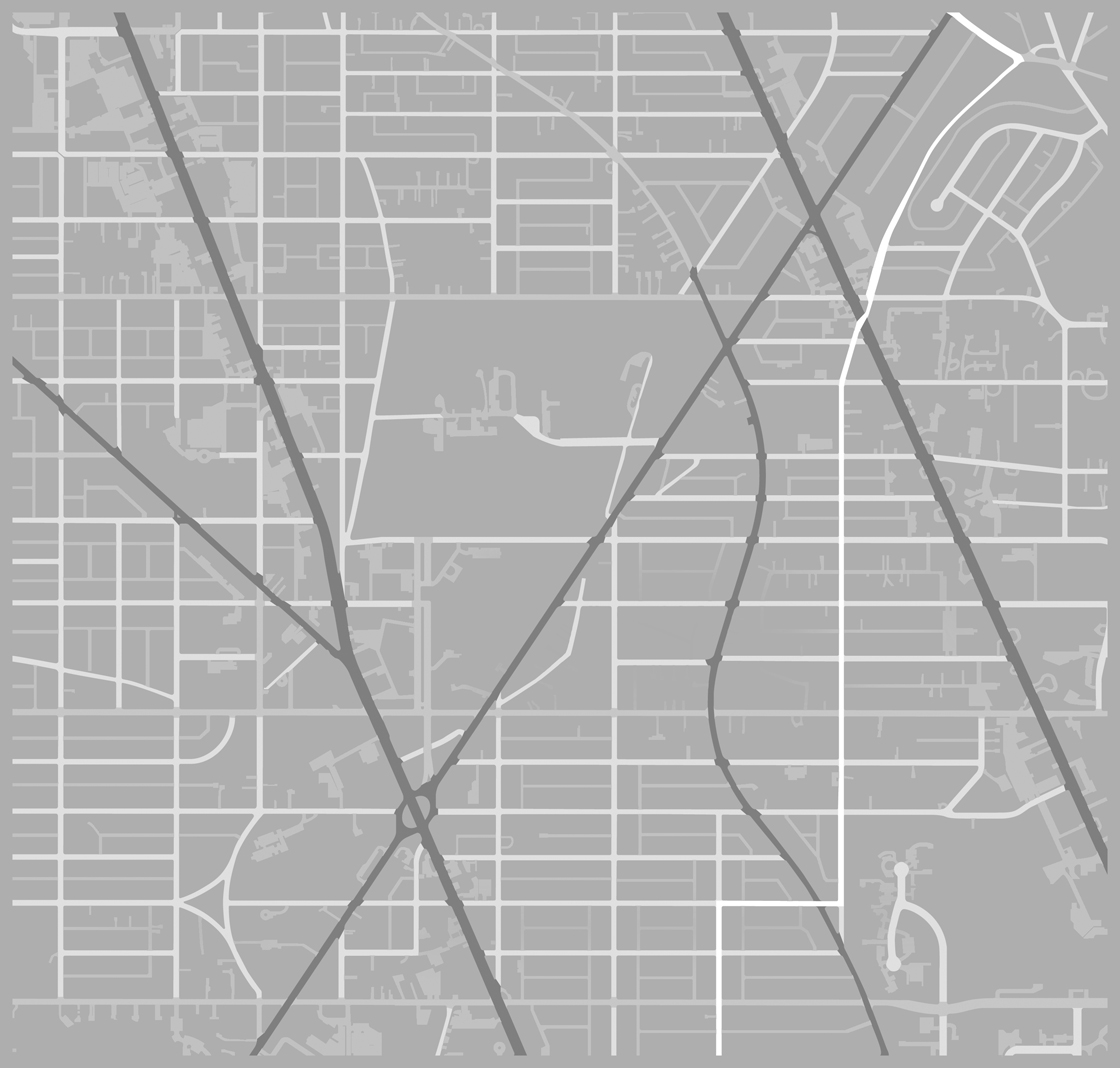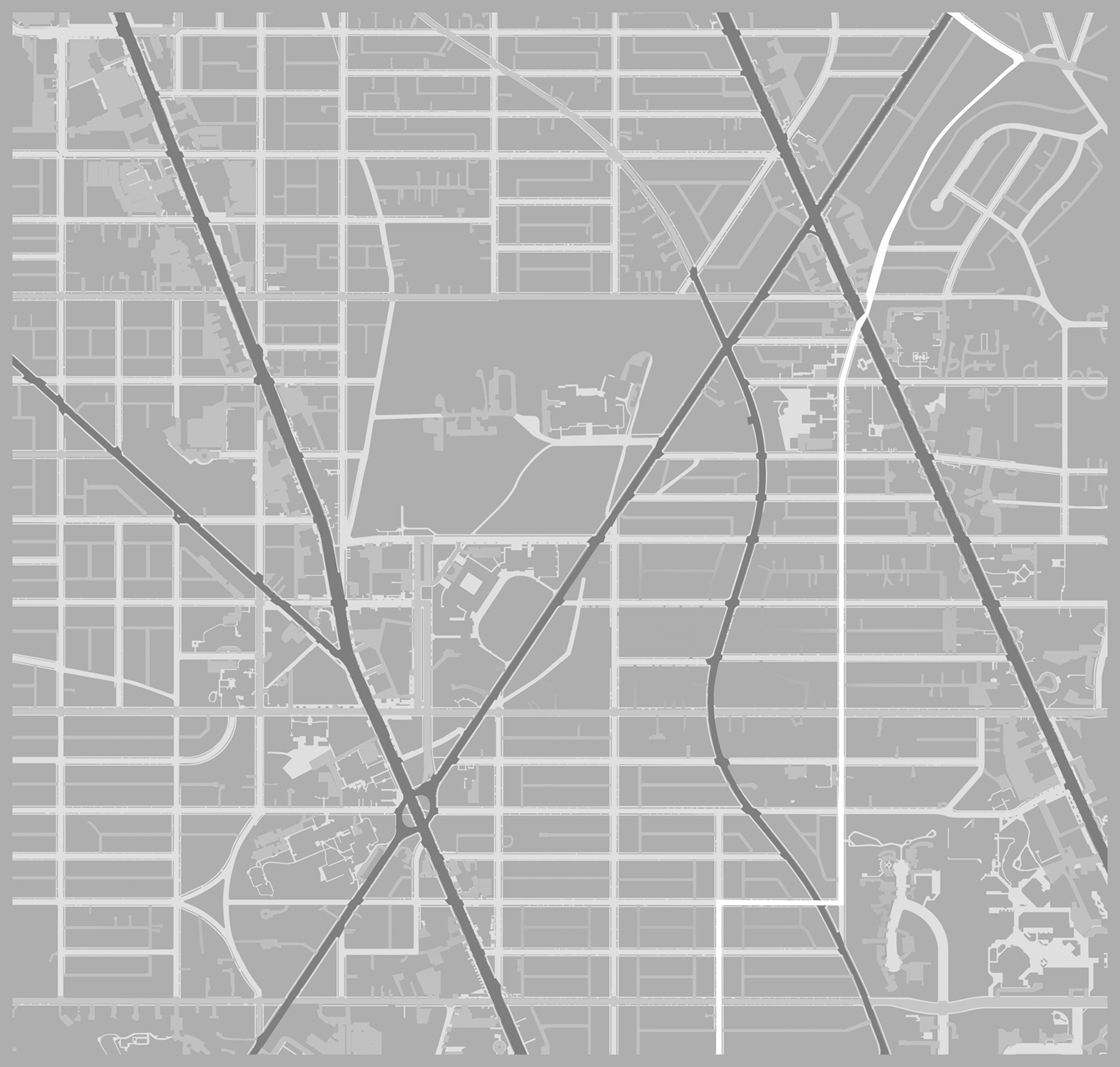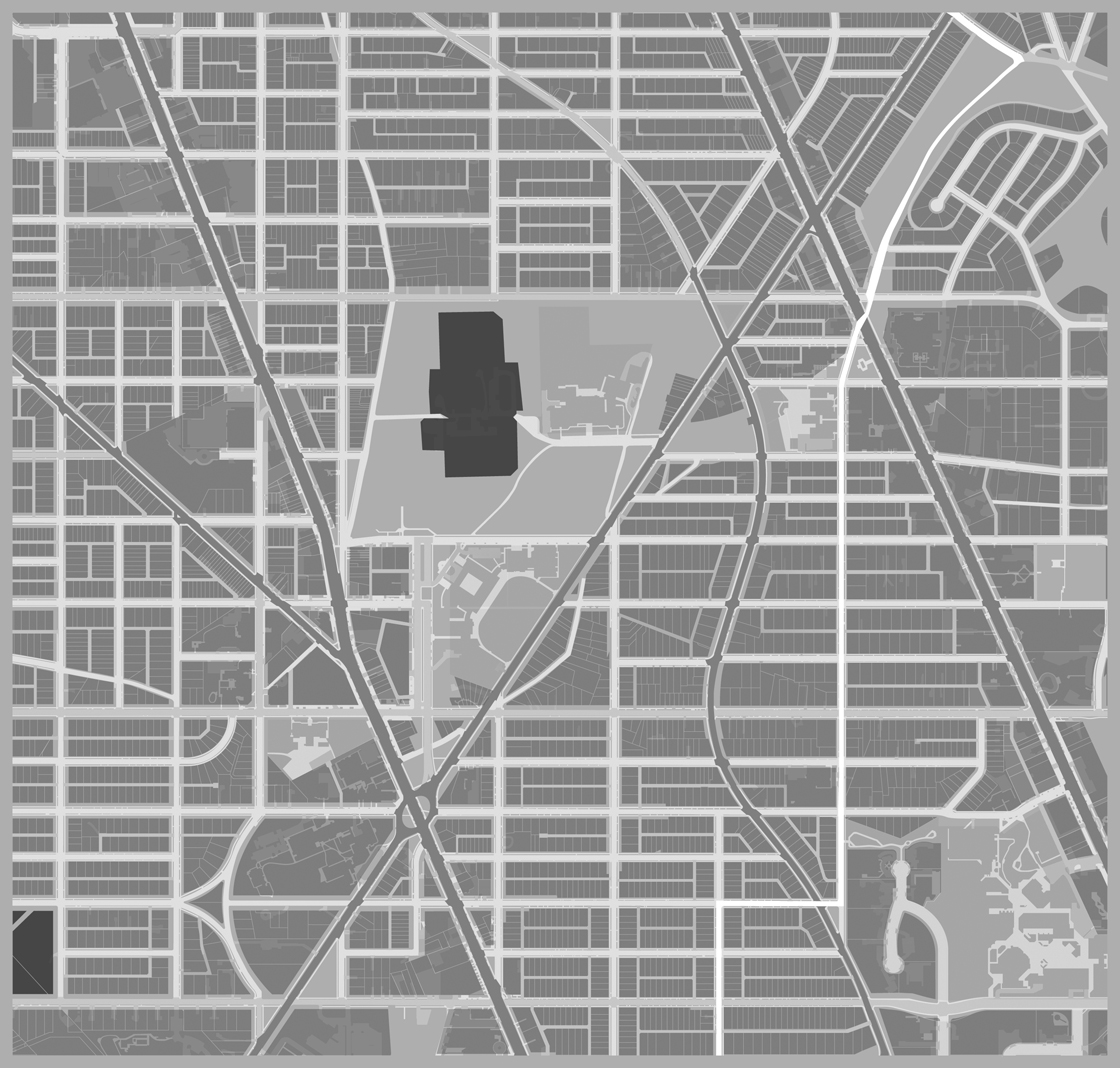Bicycling exists in a strange middle-area of the law. A bike is a vehicle in DC, but bikers can ride on the sidewalk and don’t have to register or undergo inspections. Culturally, cyclists travel in a more uncertain space, not all that welcome on the street or the sidewalk. A lack of any particular bicycle infrastructure means that there is no place of positive certainty anywhere near Tenleytown. I have to admit that judging conditions was more difficult here because of the more varying conditions cyclists find themselves subject to.
That’s reflected in the composite above; It’s really gray. And pretty dark.
To look at the way the image was composed follow down below.
First up is the land. Depending on the bike, grass is more or less accessible, but other factors, like how much the vehicles messes up landscaping, can interfere as well. Let’s say 70% bikeable.
Now, the roads are more complicated than usual. DC has suggestions about where to bike, which I’ve followed more or less, coupling the preferences with personal experience. Most streets are 90% bikeable. Totally legal, physically safe, and more negotiated, but cars still rule them. Neighborhood collector streets are 80% open. These streets have double-yellow division, occasional stoplights, and a fair amount of traffic. It’s harder to bike on these. Finally, there are streets on which biking is a real pain: 60%. Possible, but going 35 for long stretches of time is hard and people will still probably honk at you. Now, there is one signed bike route, along 36th and 37th streets. I’ve made it 95%, because there’s a little more justification for being on the road. Alleys:
Alleys and parking lots: these are pretty open to negotiation, but generally rougher and still dominated by automobiles. Say, 80%. Pedestrian spaces are next:
Pedestrian zones are another 90%. Legal, safe, certain, but still socially undesirable to some extent. Add property, which shows us the same thing as before:
You can really see the cyclist get hemmed into small areas. Nonetheless, it’s not nearly as clear as the driver’s map is. Adding buildings does help add some contrast.
Honestly, this image is just depressing. One of the big improvements I will include in my project are legitimate, useful bike infrastructure.




